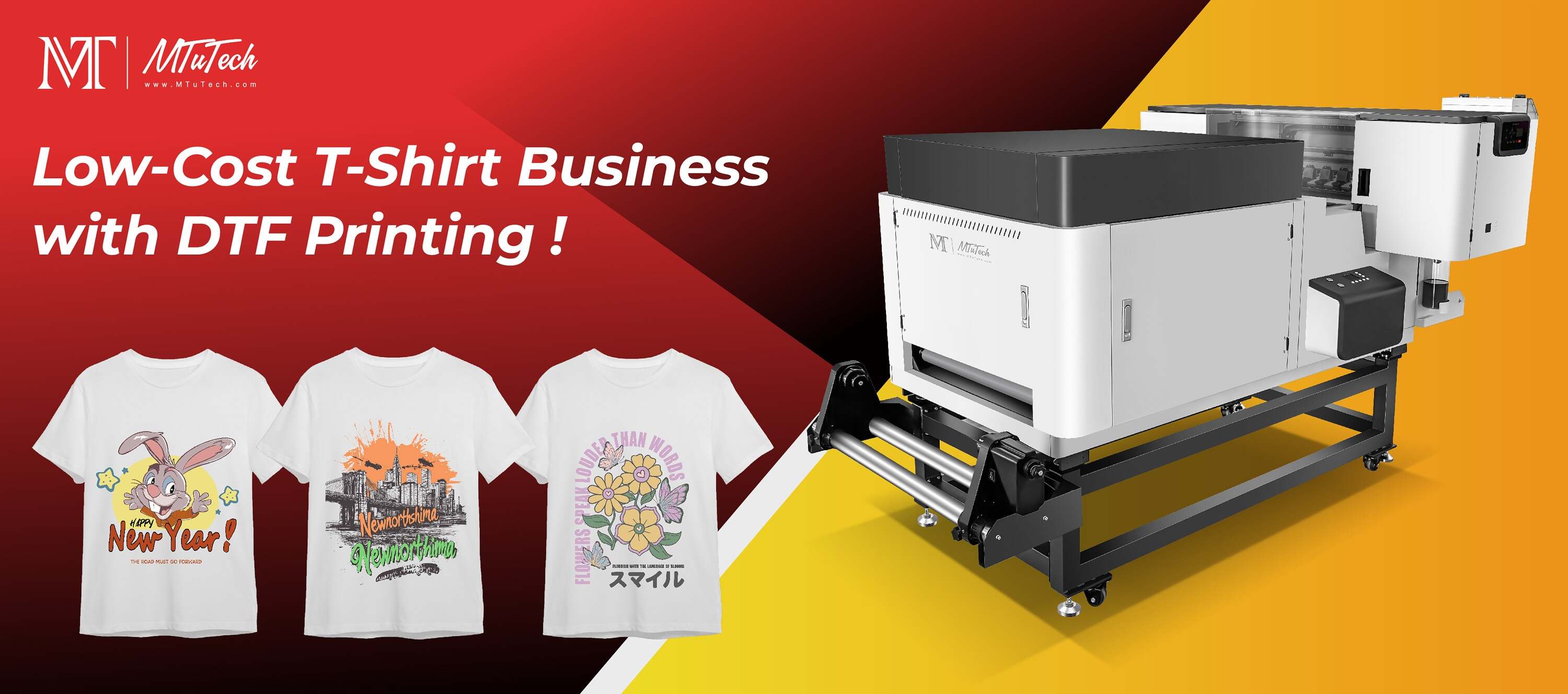
Introduction
In the ever-evolving world of fashion and apparel, the methods of printing designs on fabrics have advanced significantly. One of the most innovative technologies gaining traction is Direct to Film (DTF) printing. This technique allows fashion and apparel brands to produce vibrant, high-quality prints with impeccable detail. As the demand for customized apparel increases, investing in a professional DTF printer becomes crucial for brands looking to stand out in a competitive market.
What is DTF Printing?
DTF printing is a cutting-edge technology that involves printing designs onto a special film, which is then transferred onto fabric using heat and pressure. This method differs from traditional screen printing and direct-to-garment (DTG) printing by offering a unique combination of durability, affordability, and versatility.
Benefits of DTF Printing for Fashion and Apparel Brands
Investing in professional DTF printers can provide numerous benefits to fashion and apparel brands:
High-Quality Prints: DTF printers deliver exceptional detail and vibrant colors, making designs stand out on various fabric types.
Versatility: DTF printing can be used on a wide range of materials, including cotton, polyester, and blends, allowing brands to diversify their product offerings.
Durability: DTF prints are designed to withstand regular wear and tear, ensuring that the designs remain intact even after multiple washes.
Affordability: Compared to traditional printing methods, DTF printing requires less setup time and fewer materials, leading to cost savings for brands.
Eco-Friendly Options: Modern DTF inks are more environmentally friendly than many conventional inks, aligning with the growing demand for sustainable fashion practices.
Key Features of Professional DTF Printers
When selecting a DTF printer, it's essential to consider the key features that will meet the specific needs of your fashion and apparel brand.
1. Print Quality
Look for printers that offer high resolution and vibrant color reproduction. A printer with a higher DPI (dots per inch) can produce finer details and more accurate colors.
2. Speed and Efficiency
Speed is crucial in a fast-paced industry. Opt for printers that can quickly produce large quantities of prints without compromising on quality, helping you meet tight deadlines.
3. User-Friendly Interface
A printer with an intuitive design allows for easier operation and reduces the learning curve for staff. Look for printers with touchscreen interfaces or accessible software integration.
4. Compatibility with Various Materials
Professional DTF printers should be able to print on different types of fabrics, including cotton, polyester, leather, and blends. This versatility enables brands to expand their product range.
5. Maintenance and Support
Regular maintenance is essential for the longevity of your printer. Choose brands that offer comprehensive support, warranty options, and maintenance services.
Choosing the Right DTF Printer for Your Brand
Selecting the right DTF printer can significantly impact your brand's operations. Here are factors to consider when making your decision:
Budget: Determine your budget and explore printers within that range. Investing in a quality printer upfront can lead to savings in the long run.
Production Volume: Analyze your production needs. High-volume operations may require more advanced printers with greater output capabilities.
Future Growth: Consider printers that can evolve with your business needs. An adaptable printer can accommodate new materials or larger orders as your brand expands.
The Printing Process: From Design to Fabric
Understanding the DTF printing process can help brands develop more effective design strategies. Here’s an overview of the steps involved:
1. Design Creation
Start with creating your design using graphic design software. Ensure the design is high-resolution and suitable for printing.
2. Film Printing
Load the DTF printer with the specific film, and print the design onto it using specialized ink. The process typically utilizes vibrant CMYK inks for the best results.
3. Powdering
After printing, apply a special powder onto the film. This powder helps the ink adhere better to the fabric during the transfer process.
4. Curing
Heat the printed film to cure the powder, ensuring the ink bonds adequately for a long-lasting transfer.
5. Transfer Process
Finally, place the film onto the fabric and apply heat and pressure using a heat press. This step transfers the design onto the fabric, resulting in a finished product ready for sale.
Conclusion
As fashion and apparel brands navigate the competitive landscape, having access to a professional DTF printer can be a game changer. The unique benefits of DTF printing, including high-quality outputs and versatility across various materials, make it an excellent choice for brands looking to offer innovative designs. By understanding the features and processes involved, businesses can leverage DTF technology to enhance their product offerings and ultimately boost their bottom line. If you're ready to invest in your brand's future, explore our high-quality DTF printers here.
FAQ
What is the lifespan of a DTF printer?
The lifespan of a DTF printer can vary based on the model and how well it's maintained, but with proper care and regular maintenance, many professional DTF printers can last several years.
Can DTF printing be done on dark fabrics?
Yes, DTF printing works well on dark fabrics as the process includes a white ink base, allowing for full-color designs to appear vibrant and true to life on dark materials.
Are DTF printers suitable for small businesses?
Absolutely! DTF printers are ideal for small businesses because they offer the ability to produce high-quality prints for customized apparel without the need for large-scale manufacturing processes.
What maintenance is required for DTF printers?
Regular maintenance includes cleaning the print heads, ensuring proper ink levels, and following the manufacturer's guidelines for routine checks. Keeping the printer clean helps avoid clogs and ensures consistent print quality.
What types of inks are used in DTF printing?
DTF printing typically uses water-based inks that are more environmentally friendly than solvent-based inks. This makes them a suitable option for brands focused on sustainability.
